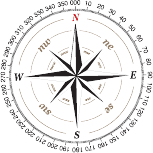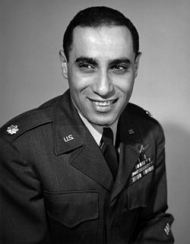Lord, David Samuel Anthony “Lummy”., born on 18-10-1913 in Cork, Ireland,  one of three sons of of Samuel Lord, a Warrant Officer in the proud Royal Welsh Fusiliers
one of three sons of of Samuel Lord, a Warrant Officer in the proud Royal Welsh Fusiliers  and Mary, born Miller, Lord. One of Lord’s brothers died in infancy. After the First World War the family were posted to British India and Lord attended Luck, now Convent School. On his father’s retirement from the Army the family moved to Wrexham and then David was a pupil at St Mary’s College, Aberystwyth before attending the English Ecclesiastical College, Valladolid, Spain to study for the priesthood. Deciding the priesthood was not the career for him he returned to Wrexham before moving to London in the mid 1930s as a freelance writer. He enlisted in the RAF in 1936. He underwent pilot training, becoming a Sergeant Pilot in 1939 with No. 31 Squadron RAF
and Mary, born Miller, Lord. One of Lord’s brothers died in infancy. After the First World War the family were posted to British India and Lord attended Luck, now Convent School. On his father’s retirement from the Army the family moved to Wrexham and then David was a pupil at St Mary’s College, Aberystwyth before attending the English Ecclesiastical College, Valladolid, Spain to study for the priesthood. Deciding the priesthood was not the career for him he returned to Wrexham before moving to London in the mid 1930s as a freelance writer. He enlisted in the RAF in 1936. He underwent pilot training, becoming a Sergeant Pilot in 1939 with No. 31 Squadron RAF  , under command of Wing Commander G J L Read AFC, on the North West Frontier, flying the Vickers Valentia biplane.
, under command of Wing Commander G J L Read AFC, on the North West Frontier, flying the Vickers Valentia biplane.  In 1941 No. 31 squadron was the first unit to receive the Douglas DC-2 which was followed by both the Douglas DC-3 and Dakota transports. He flew in the Middle East, being injured in a crash before being posted back to India. Commissioned in 1942, he flew on supply missions over Burma. Lord was awarded the Distinguished Flying Cross during 1943 and by January 1944 had returned to the UK for service with No. 271 Squadron
In 1941 No. 31 squadron was the first unit to receive the Douglas DC-2 which was followed by both the Douglas DC-3 and Dakota transports. He flew in the Middle East, being injured in a crash before being posted back to India. Commissioned in 1942, he flew on supply missions over Burma. Lord was awarded the Distinguished Flying Cross during 1943 and by January 1944 had returned to the UK for service with No. 271 Squadron , based at RAF Down Ampney, Gloucestershire training to drop paratroops, supplies and to tow military gliders. He then took part in the D-Day operations in June 1944. The Battle of Arnhem was part of Operation Market Garden, an attempt to secure a string of bridges through the Netherlands (see About). At Arnhem the British 1st Airborne Division
, based at RAF Down Ampney, Gloucestershire training to drop paratroops, supplies and to tow military gliders. He then took part in the D-Day operations in June 1944. The Battle of Arnhem was part of Operation Market Garden, an attempt to secure a string of bridges through the Netherlands (see About). At Arnhem the British 1st Airborne Division  under command of Major General Robert Elliot “Roy” Urquhart
under command of Major General Robert Elliot “Roy” Urquhart 
 and Polish Independent Parachute Brigade
and Polish Independent Parachute Brigade  under command of General Stanisław Sosabowski
under command of General Stanisław Sosabowski 
 , were tasked with securing bridges across the Lower Rhine,
, were tasked with securing bridges across the Lower Rhine,  the final objectives of the operation. The man with the umbrella on the bridge is major Digby Tatham-Warter.
the final objectives of the operation. The man with the umbrella on the bridge is major Digby Tatham-Warter.  Digby survived the war and died in Nanyuki, Kenya, age 75, on 21-03-1993. However, the airborne forces that dropped on the 17th September were not aware that the 9th SS “Hohenstaufen”
Digby survived the war and died in Nanyuki, Kenya, age 75, on 21-03-1993. However, the airborne forces that dropped on the 17th September were not aware that the 9th SS “Hohenstaufen”  , under SS Brigadeführer Heinz Harmel
, under SS Brigadeführer Heinz Harmel  and 10th SS Panzer”Frundsberg”
and 10th SS Panzer”Frundsberg”  commander SS Oberführer Walter Harzer
commander SS Oberführer Walter Harzer  Divisions were also near Arnhem for rest and refit. (see Hans-Peter Knaust)
Divisions were also near Arnhem for rest and refit. (see Hans-Peter Knaust)  Their presence added a substantial number of Panzergrenadiers, tanks and Self-propelled guns to the German defenses and the Allies suffered heavily in the ensuing battle. Only a small force managed to hold one end of the Arnhem road bridge before being overrun on the 21st. The rest of the division became trapped in a small pocket west of the bridge and had to be evacuated on the 25th. The first to reach the bridge was private Henry McAnelly,
Their presence added a substantial number of Panzergrenadiers, tanks and Self-propelled guns to the German defenses and the Allies suffered heavily in the ensuing battle. Only a small force managed to hold one end of the Arnhem road bridge before being overrun on the 21st. The rest of the division became trapped in a small pocket west of the bridge and had to be evacuated on the 25th. The first to reach the bridge was private Henry McAnelly,


 who received 46 bullets in his life and still survived and became a WW2 war guide in Arnhem. The Allies failed to cross the Rhine, which remained under German control until Allied offensives in March 1945.
who received 46 bullets in his life and still survived and became a WW2 war guide in Arnhem. The Allies failed to cross the Rhine, which remained under German control until Allied offensives in March 1945.
Death and burial ground of Lord, David Samuel Anthony “Lummy”.

 On 19-09-1944 the British 1st Airborne Division was in desperate need of supplies. Flight Lieutenant Lord, flying Dakota III KG374 through intense enemy anti-aircraft fire was twice hit and had one engine burning. He managed to drop his supplies, but at the end of the run found that there were two containers remaining. Although he knew that one of his wings might collapse at any moment he nevertheless made a second run to drop the last supplies,
On 19-09-1944 the British 1st Airborne Division was in desperate need of supplies. Flight Lieutenant Lord, flying Dakota III KG374 through intense enemy anti-aircraft fire was twice hit and had one engine burning. He managed to drop his supplies, but at the end of the run found that there were two containers remaining. Although he knew that one of his wings might collapse at any moment he nevertheless made a second run to drop the last supplies,


 then ordered his crew to bail out. A few seconds later the Dakota crashed in flames with its pilot and six crew. KG 374 crashed at Wolfheze, The Netherlands, about 6 miles (10 kilometers) northwest of Arnhem. Fragments of the wreckage are in the collection of the Imperial War Museum. Only the navigator, F/Lt Harold King
then ordered his crew to bail out. A few seconds later the Dakota crashed in flames with its pilot and six crew. KG 374 crashed at Wolfheze, The Netherlands, about 6 miles (10 kilometers) northwest of Arnhem. Fragments of the wreckage are in the collection of the Imperial War Museum. Only the navigator, F/Lt Harold King  survived, becoming a prisoner of war and spent the remainder of the war at Stalag Luft I
survived, becoming a prisoner of war and spent the remainder of the war at Stalag Luft I  , a prisoner of war camp at Barth, Western Pomerania.. It was only on his release in mid 1945 that the story of Lord’s action was known, and David Lord was awarded a posthumous Victoria Cross.
, a prisoner of war camp at Barth, Western Pomerania.. It was only on his release in mid 1945 that the story of Lord’s action was known, and David Lord was awarded a posthumous Victoria Cross.  Lord’s Victoria Cross was presented to his parents at Buckingham Palace in December 1945. In 1997, Lord’s VC, along with his other decorations and medals, were sold at auction by Spinks to Lord Ashcroft. As of 2014, the medal group was on display at the Imperial War Museum.
Lord’s Victoria Cross was presented to his parents at Buckingham Palace in December 1945. In 1997, Lord’s VC, along with his other decorations and medals, were sold at auction by Spinks to Lord Ashcroft. As of 2014, the medal group was on display at the Imperial War Museum. 

David Lord, died 19-09-1944 (aged 30), in Arnhem, Netherlands and is buried alongside his crew in Arnhem Oosterbeek War Cemetery, near Arnhem.


Message(s), tips or interesting graves for the webmaster: robhopmans@outlook.com





















Leave a Reply